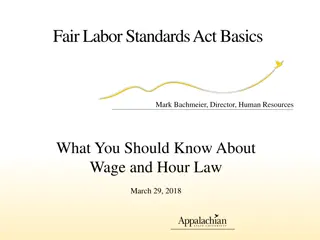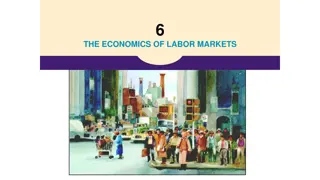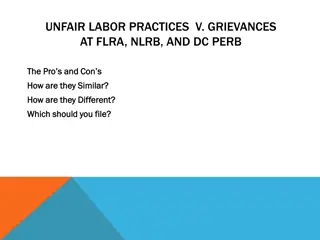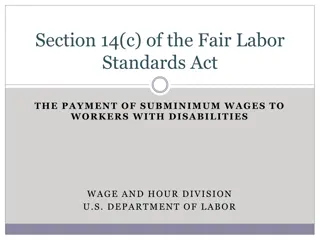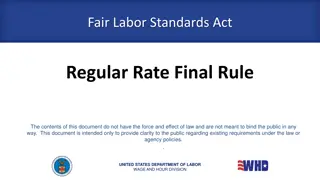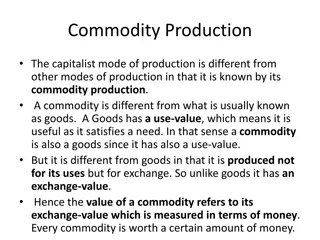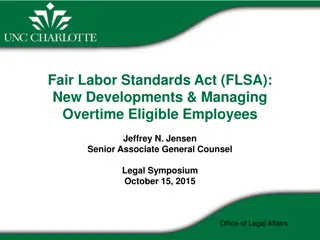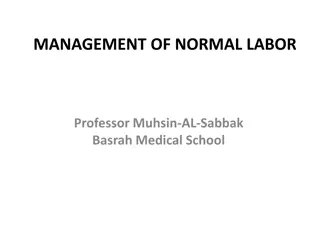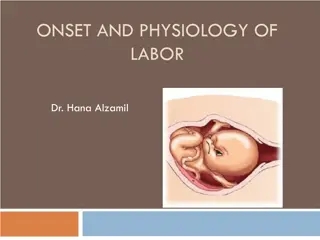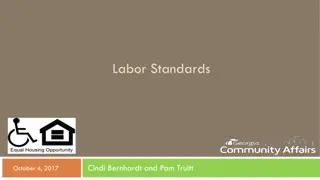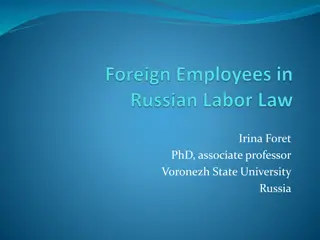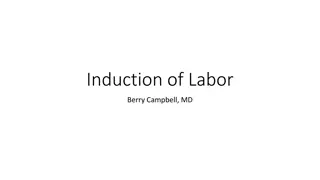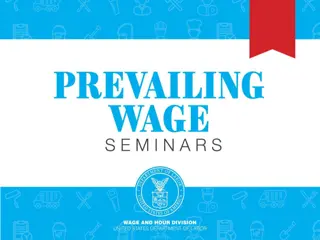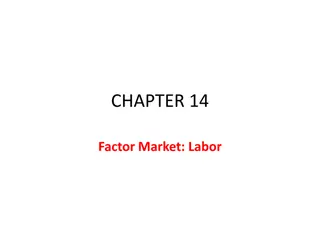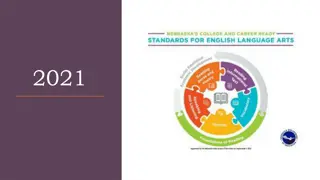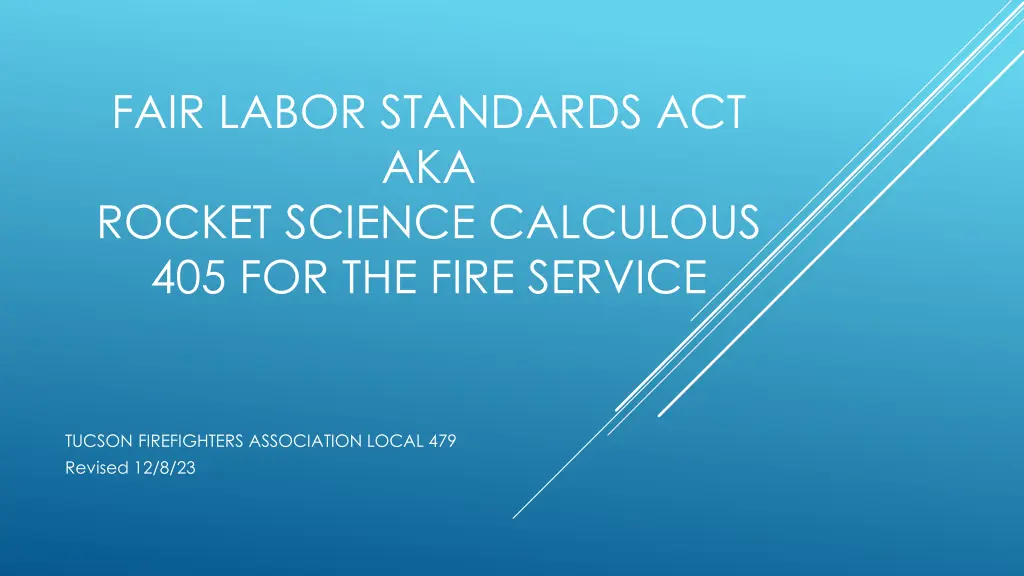
Understanding Fair Labor Standards Act (FLSA) for Firefighters
Dive into the Fair Labor Standards Act (FLSA) and its impact on firefighters, covering topics such as equalization of pay, definitions, and how FLSA regulations apply to the fire service. Learn about FLSA overtime, compensation, and more.
Download Presentation

Please find below an Image/Link to download the presentation.
The content on the website is provided AS IS for your information and personal use only. It may not be sold, licensed, or shared on other websites without obtaining consent from the author. If you encounter any issues during the download, it is possible that the publisher has removed the file from their server.
You are allowed to download the files provided on this website for personal or commercial use, subject to the condition that they are used lawfully. All files are the property of their respective owners.
The content on the website is provided AS IS for your information and personal use only. It may not be sold, licensed, or shared on other websites without obtaining consent from the author.
E N D
Presentation Transcript
FAIR LABOR STANDARDS ACT AKA ROCKET SCIENCE CALCULOUS 405 FOR THE FIRE SERVICE TUCSON FIREFIGHTERS ASSOCIATION LOCAL 479 Revised 12/8/23
WHAT WE WILL COVER Useful definitions Equalization of Pay What is FLSA? How does it apply to us? Regular Rate/Halftime Overtime Premium How does it effect our paycheck? Calculating FLSA
USEFUL DEFINITIONS Hourly Rate The amount of money you are paid per hour before wage augments. This is the number you will find on the pay scale. Wage Augments Money paid to an employee for a certification or for not using leave. It is separate from your hourly rate. TFD wage augments include specialty pay, paramedic patch pay, second language pay, sick leave sell back, ect. Remuneration Money paid to someone for work completed. This includes ALL WAGE AUGMENTS except for the Honor Guard Stipend. Regular rate/Half time overtime premium All remuneration (base wage and wage augments) divided by ACTUAL hours worked.
USEFUL DEFINITIONS FLSA Work Period Can range from 7-28 days and establishes the minimum hours that an employee must work to qualify for FLSA overtime. TFD is currently on a 14 day work period. On a 14 day FLSA work period, an employee must ACTUALLY WORK more than 106 hours to qualify for FLSA overtime. FLSA Overtime - Compensation at a rate of 1 times your REGULAR RATE, paid when an employee works greater than 106 hours in a work period. Extra Duty Compensation at a rate of 1 times your HOURLY RATE. Paid anytime you work an extra duty shift regardless of how many hours you have worked in a work period.
EQUALIZATION OF PAY Currently, unless you work extra duty, you are being paid for 112 hours every pay period. This equalization of pay avoids fluctuation in your paychecks. Our scheduled pay periods range from 96 to 134 hours. Any fluctuation in our pay checks is usually due to payment of FLSA overtime, which is paid after you have ACTUALLY WORKED greater than 106 hours in a pay period. Since not all pay periods exceed the FLSA thresholds, you may not get FLSA on every check.
WHAT IS FLSA??? The Fair Labor Standards Act (FLSA) was established by the U.S. Department of Labor in 1938 to ensure fair labor practices by private, state, and local government. FLSA laws cover minimum wage, overtime compensation, comp time, child labor, and recordkeeping. Do not confuse FLSA with FMLA. FMLA is a type of leave. THEY ARE NOT THE SAME THING.
HOW DOES FLSA APPLY TO US?? Fire service personnel are addressed within the FLSA in Section k exemption. Most private and government employers must pay overtime after employees work over 40 hours per week. The Section K exemption allows fire department s to pay overtime for hours that are worked in a specific time period, ranging from 7 days to 28 days. This is known as a work period.
HOW DOES FLSA APPLY TO US?? The amount of hours fire service personnel can work before they are paid an overtime premium is dependent upon how many hours they worked in a work period. With the 3/4 schedule, our actual hours worked range from 96 to 134 in a single pay period. THIS IS WHY YOUR FLSA PAYMENT AMOUNT FLUCTUATES.
WHAT DOES TFD USE??? Local 479 negotiated a 14 day work period in 2022. We are paid overtime after 106 actual hours worked within a 14 day time period. If you work more than 106 hours within a single pay cycle, you will be compensated the half time overtime premium for hours over 106. The longer the work period, the greater the hours worked threshold is. 28 day work period = 212 hours worked 14 day work period = 106 hours worked 7 day work period = 53 hours worked
TFD SPECIFICS Some aspects of FLSA can be negotiated. Negotiations can only enhance FLSA laws. The number of days in a work period must be between 7 and 28. We use a 14 day work period. The lower the number of days in a work period, the lower the threshold to reach FLSA overtime. FLSA states that any leave can count against your actual hours worked in a work period. Sick leave is the only leave that currently counts against your actual hours worked.
REGULAR RATE Used to calculate the amount of your FLSA overtime payment. Is based on your earnings divided by hours worked. Is different from your hourly rate.
REGULAR RATE/HALF TIME OVERTIME PREMIUM To calculate regular rate, divide your total remuneration by your actual hours worked. To get the half time overtime premium, divide the regular rate by half.
CALCULATING REGULAR RATE/HALF TIME OVERTIME PREMIUM NO AUGMENTS Base hourly pay: $20.00 Hours actually worked: 120 $20.00 x112 = $2,240.00 We are paid for 112 hours unless we work ED No extra wage augments Total remuneration: $2,240/120(actual hours worked) = $18.66 (Regular Rate) Half time overtime premium rate= $18.66 x .5 = $9.33
CALCULATING REGULAR RATE/HALF TIME OVERTIME PREMIUM RATE NO AUGMENTS FLSA hours due = 120 106 = 14 14 * $9.33 = $130.76 Total FLSA Payment = $130.76
CALCULATING REGULAR RATE WITH AUGMENTS Base hourly pay: $20.00 Hours actually worked: 120 $20.00 x112 = $2,240.00 We are paid for 112 hours unless we work ED Wage Augments Patch Pay = $246.20 Total remuneration: $2,486.20/120(actual hours worked) = $20.72 Half time overtime premium = $10.36
CALCULATING REGULAR RATE WITH AUGMENTS FLSA hours due = 120 106 = 14 14 * $10.36 = $145.04 Total FLSA Payment = $145.04
CALCULATING REGULAR RATE E.D. Base hourly pay: $20.00 Hours Scheduled: 120 Extra Duty Hours: 24 Hours Worked: 144
CALCULATING REGULAR RATE E.D. Base pay: $20.00 x112 = $2240.00 Extra duty pay, full time: $20.00 x 24 = $480 Extra duty pay, half time: $20.00 x 24 x .5 = $240 No extra wage augments $2,720 (total remuneration)/144 (hours worked) = $18.89 = Regular Rate Half time overtime premium = $18.89 x .5 = $9.44
CALCULATING REGULAR RATE/HALF TIME OVERTIME PREMIUM E.D. You were already paid overtime Extra duty pay, full time: $20.00 x 24 = $480 Extra duty pay, half time: $20 x 24 x .5 = $240 FLSA over time due = 144 - 106 38(FLSA OT hours due)*$9.44 (half time overtime premium) = 358.89 Subtract extra duty pay, half time from the FLSA total due $358.89 - $240.00 = $118.89 This is your FLSA payment
CALCULATING REGULAR RATE WHY DO WE USE HALF??? It seems like we should be using the entire regular rate and not multiplying it by .5 5thCircuit U.S. Court of Appeals determined that this method is acceptable.
IN SUMMARY FLSA is typically only due when you actually work greater than 106 hours in a pay period Your regular rate/half time overtime premium will increase with each wage augment that you earn FLSA calculations can be extremely complex Methods to calculate FLSA have been determined by judges in Federal Courts The calculations for this have been created in Workday and have been specifically built with all of these rules in mind. A standalone calculator is being developed and MAY be available for field personnel to use in verifying their FLSA payments in the future.
QUESTIONS??? Anthony D Onofrio Email: Anthony@tucsonfirefighters.org; adonofrio4806@gmail.com Cell: (520) 904-8814 Chrissie Hancock, Payroll Supervisor Email: Christina.Hancock@tucsonaz.gov Office: (520) 791-4557

